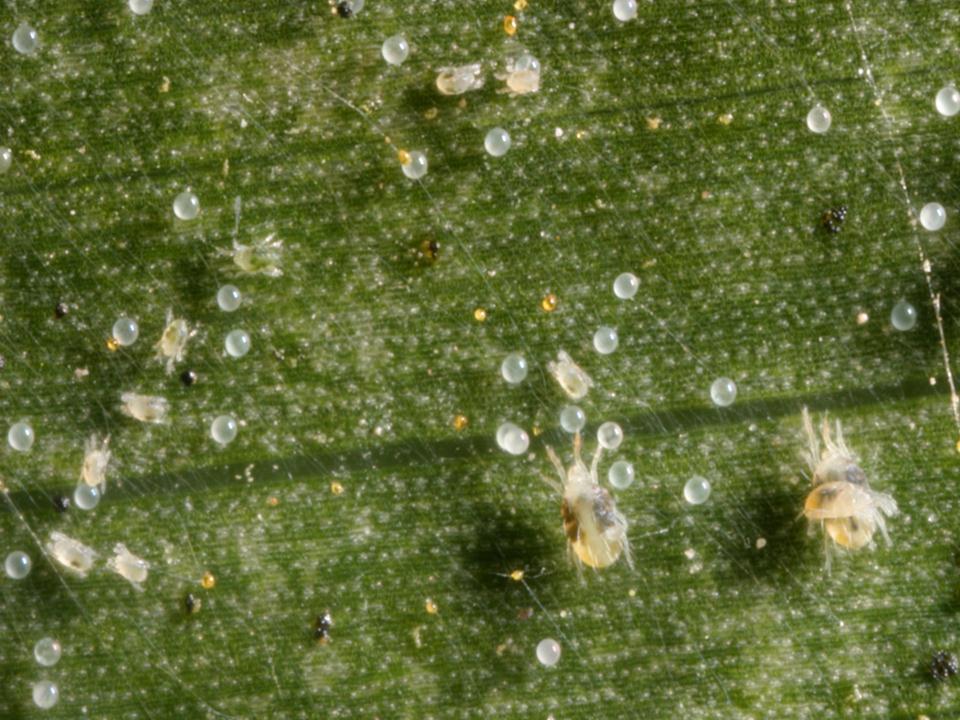Spider Mites
Tetranychidae
|
Two-spotted spider mites with eggs. |
Spider mite damage to corn leaves. |
Spider mites are typically a more serious problem in southwestern Kansas, but may occasionally cause economic losses in other areas, especially under conditions of drought. It should be stressed that miticide applications should be based on the current and projected status of the mite population and not simply damage ratings. The mite history of the field, projected weather patterns, rates of population increase, and the maturity of the crop dictate the need for treatment.
In southwest Kansas, where mites have historically been a problem, pre-tassel treatments of a selective miticide (e.g., Comite) may be justified. This is true particularly if the weather pattern is expected to be hot and dry, or if a broad spectrum insecticide has been applied to control other pests. These materials can decimate populations of predatory mites that otherwise contribute substantial biological control of spider mites. Field history and past experience remain the best guide, but preventive treatments are not generally recommended in areas if mites are not found before tasseling, or where insecticide sprays are not anticipated.
Later in the season (after tassels have emerged) mite populations justify control when large colonies cover extensive areas along the midribs of the bottom one or two leaves and mites are beginning to colonize other leaves on the plant in significant areas of the field. Like many crops, corn seems to be most susceptible to damage and yield loss if mites become abundant during reproductive stages, from tasseling through soft dough.
Spray coverage is critical to achieving effective mite control, and the easiest way to increase coverage is to increase the gallonage applied per acre. Aerial application studies in Texas and Colorado indicate significantly improved mite control at 3 gallons of spray per acre when compared to 1 or 2 gallons, and noticeable improvement with up to 5 gallons per acre. Typically, more than one application is required - it is important to check that most eggs have hatched prior to a second application, as eggs typically survive treatments. Resistance management should be an important consideration in mite control strategies where mites are a perennial problem, as the number of effective miticides is limited, and mites are noted for their ability to evolve resistance.
Please refer to the most recent version of the Corn Insect Management Guide for treatment options.
Page last updated 4/2/2024 by J.P. Michaud.

